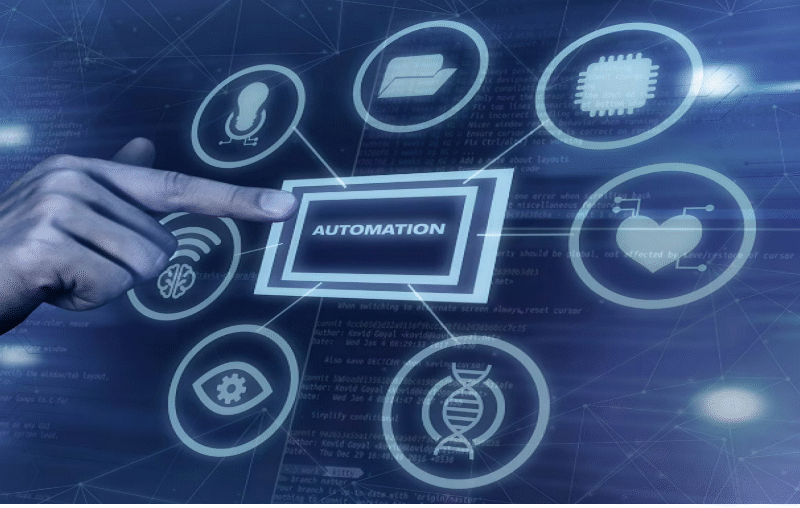When GenAI emerged on the scene, many of the most significant advances in the field occurred in research-only environments. That is to say, people were pushing the boundaries of the technology in ways that didn’t necessarily translate into commercial software products. This resulted in widespread speculation about what kind of impact AI would eventually have on the workplace. The consensus was that AI would end up costing humans their jobs.
Fast-forward to today, however, and that still hasn’t happened. While AI tools have grown in capability and complexity by leaps and bounds, they aren’t yet replacing human workers. Incidentally, even companies actively trying to replace humans with AI are having little success. The reason for that may be a simple one. The vast majority of recent significant commercialized AI developments aren’t aimed at displacing human workers-they’re aimed at helping them.
Generative AI as a Productivity-Enhancer
Today, many of the most innovative companies in the AI space are building solutions meant to work alongside skilled workers. They’re doing so with good reason. It’s because early studies have already demonstrated that pairing generative AI (GenAI) with skilled workers yields significant productivity benefits. For businesses, this creates the perfect entry point to integrate AI into their workflows. Instead of an all-or-nothing approach, they can utilize AI to augment their existing workforce and better use its strengths. For AI companies, it means a receptive audience eager to adopt their tools.
Real-World GenAI Productivity Boosting Use Cases
The idea of using GenAI as a productivity enhancer is already more than theoretical. There are real, live examples of it already appearing in multiple industries. The following are a few of the more notable among them.
Software Development Acceleration
One of the first places where agentic GenAI solutions made an impact was in the software development industry. It is, after all, about a natural fit as there is. The earliest solutions included code suggestion tools from some of the tech industry’s most prominent players. Notable examples include Microsoft’s GitHub Copilot and Amazon’s Q Developer. In real-world use, both tools reportedly sped up coding tasks by an average of 30%.
For businesses, however, there is a need for far more specificity than generic AI coding assistant tools can provide. That’s where autonomous AI development tools come into play. Adir Ben-Yehuda, CEO of AutonomyAI, says, “Businesses can have extremely complex codebases with thousands of snippets that overwhelm developers. AI thrives in this environment, standardizing, cleaning, organizing and updating the code continuously, freeing up developers’ time so that they can put their focus on other high-level tasks.”
AutonomyAI’s ability to integrate with company codebases represents the next generation of AI software development. Its AI agents not only help individual developers with daily tasks, but operate at an organisational level, comprehending a business’s evolving needs, and producing code that’s ready to use off the bat. One of its most useful features is its ability to translate Figma mock-ups into functional, front-end code.
Customer Service Augmentation
Another place where GenAI solutions are already having a significant impact is in customer service operations. There, GenAI agents are relieving some of the pressure from human customer service representatives. For example, few companies don’t yet rely on customer-facing chatbots to handle at least their most basic customer service interactions. However, those solutions are only the tip of the iceberg.
According to Tony Bates, CEO of Genesys, the latest innovations in AI-infused customer service focus on making customer interactions more human, not less. He says, “In an era increasingly shaped by AI, the most memorable customer experiences harness the power of ‘and’-they are fast and human, automated and deeply personal. Being seen and understood isn’t at odds with scale. It’s what elevates it.”
Among other things, Genesys’s solution works both as a frontline customer service agent and an assistant to human representatives. Their context-aware virtual agents offer human-like interactions and provide representatives with helpful support information based on what customers say during calls. The result is simpler interactions that never escalate to human agents, and those that do get resolved faster.
Healthcare Delivery Optimization
One of the most notable examples of an agentic GenAI solution enhancing productivity in a real-world industry is the healthcare sector. There, a product from a company called Hippocratic AI is helping to solve two enormous problems. The first is the difficulty healthcare providers face in conducting reliable outreach to patients to facilitate preventative care. The second is in freeing overstretched doctors and nurses from routine tasks, such as patient intake, as well as pre-op and discharge instructions. Doing so could let them focus more on delivering care rather than on administrative tasks.
The company’s goal is to utilize AI to address the pressing issue of scarce resources, which negatively impact patient outcomes. CEO Munjal Shah believes that his company’s product can be the cure for much of what ails the American healthcare system. He says, “Never before in human history have we approached healthcare with the notion of infinite abundance. For the first time, AI makes that possible.”
WellSpan Health is one of several healthcare providers already utilizing Hippocratic AI’s virtual healthcare agent for patient outreach and low-risk pre-procedure instructions. Notably, the agent’s multilingual support is helping WellSpan reduce healthcare access disparities, particularly among Spanish-speaking populations. At the same time, it’s helping blunt the impact of the nationwide healthcare worker shortage on the company.
Final Word
The examples above are just a few instances of how businesses are already utilizing AI to enhance their employees’ productivity. And by eliminating repetitive and mundane tasks, their workforces are happier, too. The bottom line is that GenAI doesn’t seem to be replacing humans’ jobs, at least for now. Instead, we’re likely to see GenAI complimenting and empowering humans in their roles, fueling an unprecedented productivity boom.
The post GenAI Will Fuel People’s Jobs, Not Replace Them. Here’s Why appeared first on Datafloq.

